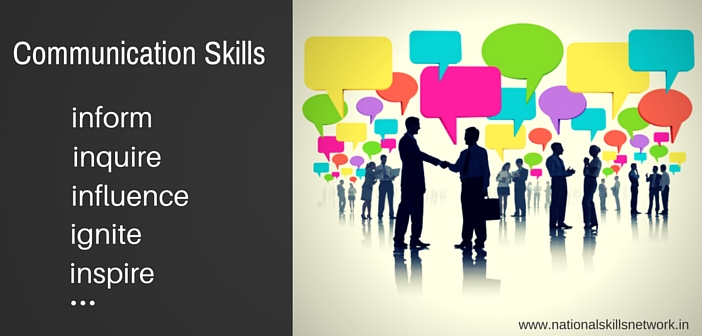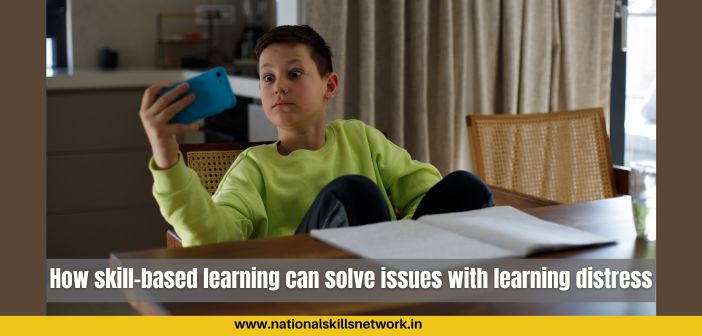An important aspect of lifelong learning is that we constantly keep trying and exploring what works in different situations. This applies to many life skills, particularly communication. However, can communication skills really be taught in a classroom? In this Skill Talk, Dr Mathukutty Monippally, Professor of Communication (retired), IIM Ahmedabad, discusses some of the inherent problems in the way we have conceptualized communication skills and how these skills can be facilitated by creating the right context and environment. Let’s read on to know more about these skills.
Can we teach communication skills?
Over the years, communication skills have been tagged as a light subject in school and college curricula. But these are life skills that cannot be defined, taught, and measured within the standard curricular framework. In fact, vastly different communication styles can be equally effective in different contexts. Most of the textbooks on communication talk about communication skills rather than walk the learners through them. We pick up our communication skills from our homes, neighbourhoods, educational institutions, and other communities that we become part of. It’s always a work in progress, not a matter of gaining proficiency in a subject and passing it.
 Critical role of feedback
Critical role of feedback
We need to abandon the idea that we can teach communication. But, because mistakes in communication can be costly at the workplace, academia will have to address this issue. Since there are no formulae nor best practices in communication that can be taught, the best way is to help students refine their skills by getting them to perform a variety of communication tasks – written, spoken, public, formal, informal, and so on – in different contexts and giving them their teachers’ and peers’ feedback on their performance. Feedback tells each student what is working and what isn’t. This cannot be standardized.
Looking at things from others’ perspective
We usually tend to look at things from our own perspective. We are so firm in our beliefs that we have great difficulty seeing others’ perspective leave alone appreciating it. Really skillful communicators manage it beautifully. Appreciating the other’s perspective doesn’t necessarily mean accepting it or going along with it, but understanding it. Figuring it out is the key to successful communication.
Let us, for example, assume that you asked your boss for a raise and that you didn’t get it. If the way they communicated with you made you feel that your perspective and expectations had been understood well and that there were constraints that stood in the way of an immediate raise, you would accept the decision with equanimity. If you didn’t feel so, you might be tempted to resign or lower the quality of your contribution making the problem worse.
For me, communication is synonymous with influencing others. Such influence may help them accept something, reject something, buy something, or just change their mind. If I succeed in doing so I’ve communicated well. A good communicator has the ability to look around, observe, figure out and employ what influences others.
The ability to influence others
Some acquire this ability without any formal instruction. Let me give you an example from Martin Gilbert’s biography of Sir Winston Churchill*. We find that as a twelve-year-old Winston got most of what he wanted from his parents in spite of their stiff initial opposition. He managed it through a series of well written letters sent from his hostel. They are well worth reading more than a century after they were written.
Display of emotions
Another important communication feature is ability to display emotions when needed. Let’s assume you are angry and you want to show it; it’s better to display that emotion than hide it. We see a lot of people who want to speak their mind, but fail to – timidity stops them from communicating well. So, one needs to be courageous; there’s nothing wrong in showing one’s frustration, anger, or sadness – this makes it genuine. The trick is to do so without losing one’s cool.
Communication in the connected world
With so many digital channels and devices around, the environment of communication has changed dramatically. Now, we may have to write hundreds of emails, text messages, and social media updates every day. Because of the prevalence of the 24X7 culture, we have little time for reflection; we have to act fast. As a result, communication is getting shallower in many cases because the basic challenge of communication hasn’t changed.
Communication, which should take place one on one, increasingly becomes public because of social media. We are constantly looking at what others are saying and doing and endorsing it instead of sharing our real views. Facebook posts can be phony, at times!
Interestingly, others’ expectations have also become lower. If, for example, there are some typos in your professional email, people don’t take them too seriously, whereas similar mistakes in a formal letter in the not so distant past would have had serious consequences. There is greater tolerance of errors now because everyone realizes that earlier standards are unrealistic in the fast-paced, connected world.
It’s interesting to see how digital tools change the future of communication. What will not change are the goals of communication: inform, persuade, motivate, influence, and inspire to achieve results in our personal and professional lives.
*Reference: Name of the book: Churchill – A Life by Martin Gilbert
http://www.goodreads.com/book/show/824938.Churchill
http://www.amazon.com/reader/0805023968?_encoding=UTF8&page=30













